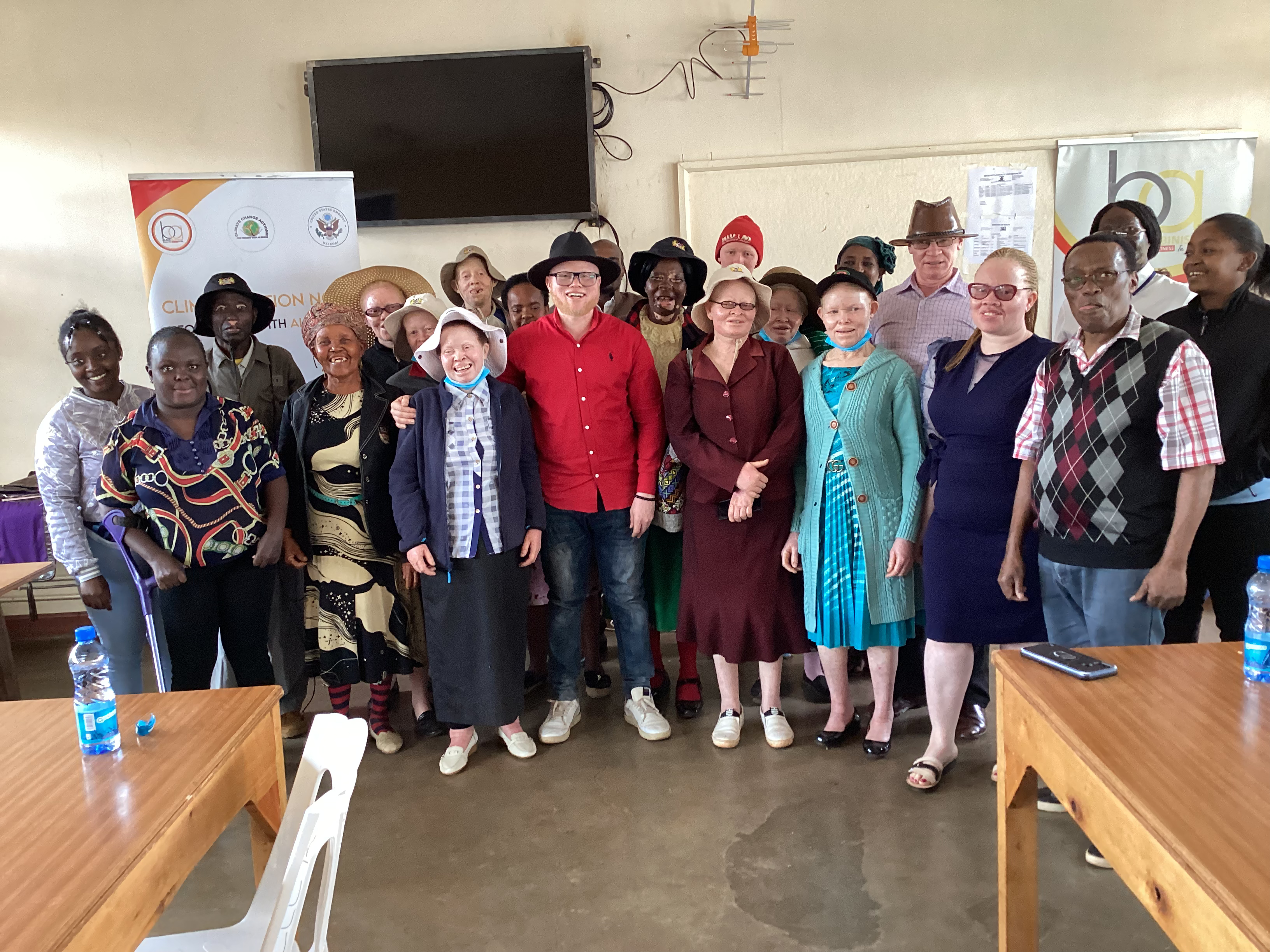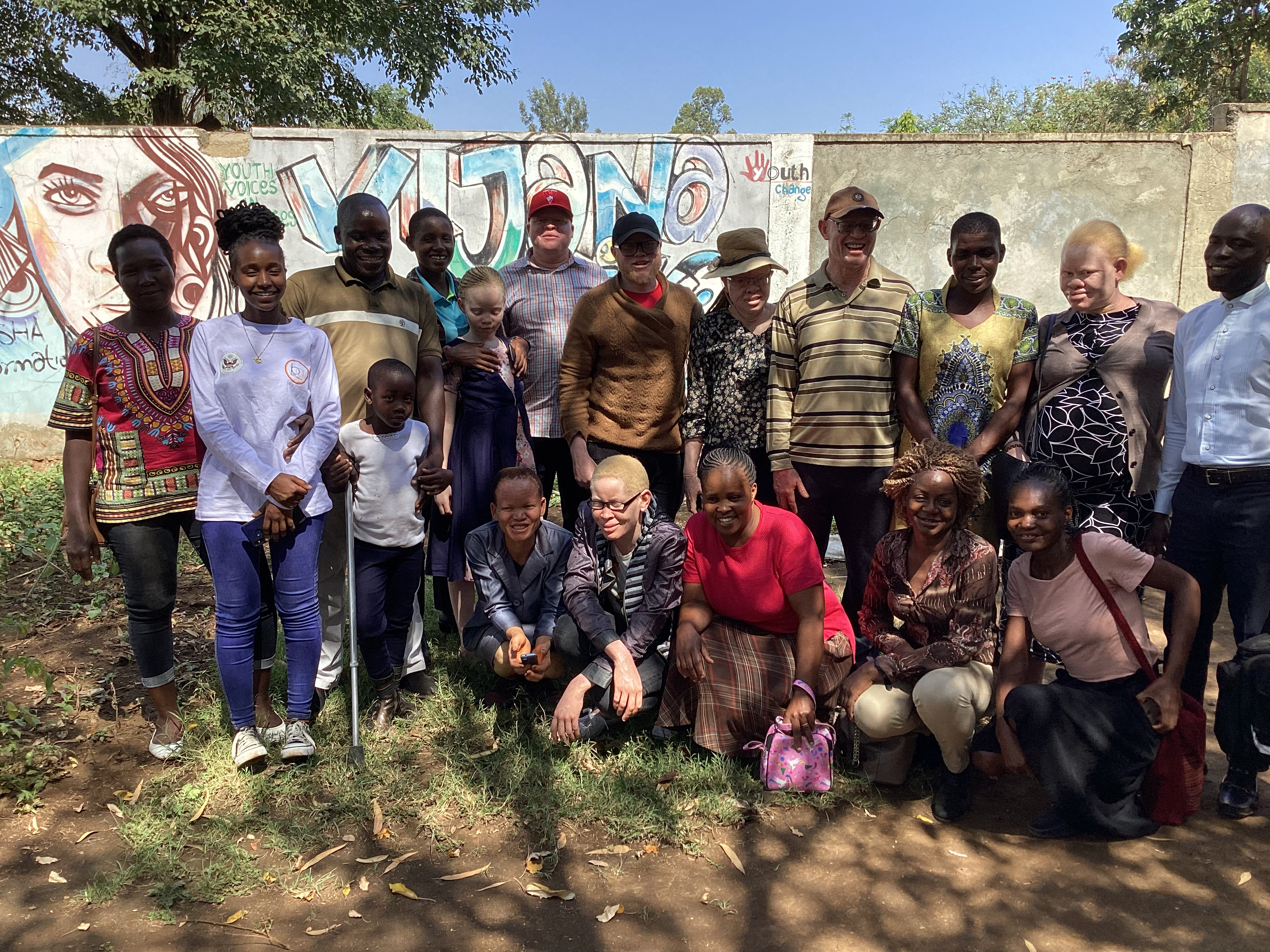EFFECTS OF CLIMATE CHANGE ON PEOPLE WITH ALBINISM IN MURANG’A, KISUMU AND MOMBASA COUNTIES.
Climate change in Kenya is far from new music to the ears, it almost sounds like a broken record that is perpetually played on loop year in, year out. It ranks among the topmost pressing issues not only in Kenya but also across the globe. The gradual deterioration of a conducive and sustainable climate has been primarily attributed to the negligent and excessive emission of greenhouse gasses to the atmosphere through human activities. This has subsequently resulted in adverse effects on the general public and more so, the Albinism community.
Black Albinism, through its Climate Change Action program, took three trips to three counties across the country - Murang’a, Kisumu, and Mombasa, in a bid to assess climate change literacy as well as the effects of climate change on People With Albinism (PWAs)
The first trip was made to Murang’a County, a fifth of the larger central Kenya, that shelters slightly above one million people. Murang’a is known for its fertile land and good climate. However, climate fluctuations have not spared the evergreen county. Black Albinism met with Murang'a People With Albinism (PWAs), persons with vitiligo, representatives from the National Council for Persons With Disabilities (NCPWD), and a dermatologist from Murang’a hospital.

A majority of the attendees being men and women aged 35 and above, their major concern was the economic instability they have been grappling with due to climate change. They noted that the extreme temperatures have significantly affected their cattle which now produce less milk in comparison to when the climate was conducive. The reduction in milk production has meant less milk sales and thus less profit which has eventually dented them financially. Further, they have had to resort to either working early mornings or late afternoons to counter the harsh UV rays of the scorching sun in order to evade its effects on their skin.
In addition, they iterated that they are time and again discriminated against by being excluded from participating in various county projects. This, they say, has rendered them feeling stigmatized and forgotten. On the flip side, with the institution of the Kang’ata care medical insurance, there seems to be a sense of goodwill from the county government of Murang’a to establish parameters that would hugely benefit PWAs despite the vague nitty gritty of this particular health scheme.
411 kilometers away from Murang’a county, is the third largest city in Kenya, a host to the largest lake in Africa, and home to 1.1 million people, Kisumu County. Here, Black Albinism met with PWAs, their parents, and caregivers, whose main quest and interest is in climate championship through planting trees. They also petitioned for legislation that penalizes perpetrators of environmental pollution.

The attendees noted that their major challenge as PWAs in Kisumu is the illiteracy of community leaders on Albinism as they have failed to recognize them as part of People With Disability (PWDs). Also, they face social stigmatization from the general public and the medical personnel in pursuit of healthcare as well as exclusion from disability events and meetings. All PWAs from Kisumu County want is to have a sense of belonging, by being recognized as People With Disability and for awareness to be created so as to reduce stigmatization and discrimination.
The final trip that Black Albinism’s Climate Action Change program made was to the go-to vacation destination in Kenya, a county that 1.2 million Kenyan citizens call home, Mombasa County. The beauty of Mombasa County seemingly extends to every sphere of the county; when the organization met with the PWAs within the county, it was noted that the creation of awareness of PWAs has notably been done extensively in different regions within the county by different organizations.
The biggest challenge, however, has been synchronizing the myriads of voices pro-albinism into one single voice. That being said, Mombasa has not been excluded from the effects of climate change. The program’s attendees noted that there has been low coconut harvest for coconut farmers, which has sprung forth economic incapacitation. Also, similar to Murang’a County, they have had to work either early mornings or late nights to evade the unfavorable UV rays from the scorching sun.

While we give deserving flowers to counties such as Mombasa that are continuously putting their best foot forward to create awareness on PWAs, it is equally deserving to call out members of the society of Murang’a county and Kisumu County that are still adamant about recognizing PWAs as members of the general public and most importantly, members of PWDs. Undeniably, more needs to be done to create awareness of PWAs in order to create equality in terms of treatment and opportunities. In the same tune, members of society should do their due diligence and purpose to have a shift in mindset lest we sing the same song year in year out.